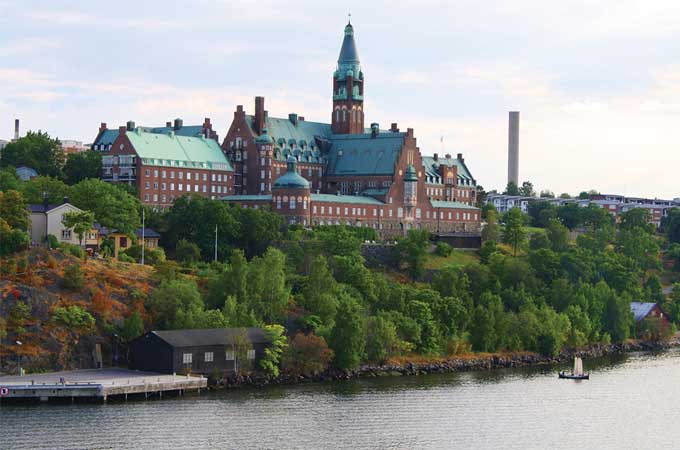The beauty of a Baltic cruise is that you get to see five cities in seven days. That, too, is the problem. During such a whirlwind schedule, one city usually gets the short end, and on our Silversea cruise, it was Helsinki. Five hours—that’s it, and what can you do in five hours?
You’d be surprised. We loaded up on guidebooks, purchased the Helsinki Card, and took our best shot. First, you have to know a little about the city so you can get to its essence. For one thing, Helsinki is much ‘newer’ than its Scandinavian neighbors. Surrounded by water on three sides, the modern metropolis, while geographically part of Scandinavia, has a heavily Russian aura. Both of its major cathedrals, Helsinki Lutheran and Uspenski, have those distinctly Russian Orthodox domes. Even the ancient church tower at Suomenlinna fortress is topped by a single oxidized dome with a gold cross (not surprising, given it was built as a Russian Orthodox garrison church in 1854).
That Russian influence can be seen everywhere because it wasn’t until 1917 that Finland became a sovereign nation, after centuries of domination by either Sweden or Russia. The country was originally founded in 1550 by Sweden to act as a buffer against Russia. The architecture of most of this city’s prominent structures is neoclassical, with gigantic pillars, dentil molding and massive alabaster statuary.
So I’d say the first thing a rushed tourist should do is go to Senate Square and look up at those two houses of worship and at all the other imposing Classical Revival structures built in the early 19th century. Then step into both cathedrals to get a sense of the city’s dual identity: Slavic v. Scandinavian.
In Uspenski Cathedral, an elaborate iconostasis in front of the nave depicts gilt-enhanced paintings of biblical characters. Massive chandeliers, marble pillars and a gilded ceiling add to the heavily ornate nature of this Helsinki Orthodox parish church. The exterior design comes from the wood architecture of old Russia.
Helsinki Cathedral, older than Uspenski, has a bright white Romanesque exterior and clean, open pews laid out in a cross formation. Built by Prussian architect Carl Ludvig Engel, it clearly conveys a different esthetic, one that downplays worldly grandeur with a clean-lined simplicity, in stark contrast to its Russian Orthodox neighbor. It sits very high above the city, as if to emphasize its relationship to heaven, with steep steps that make you work to get there (heavy-handed symbolism?).
Once you cross these two landmarks off your list, head to Temppeliaukio Church, or ‘Church in the Rock,’ a 20th-century house of worship quarried from bedrock so that it appears to rise directly from the earth. Inside, worshippers are surrounded by the natural stone, with light flooding eerily in through glass ceiling panels. The organic space has a wide-domed copper ceiling and octagonal pews that seat 6,000. It was built in 1969 by architect brothers Timo and Tuomo Suomalainen, who won the worldwide competition to see who would design the church.
Before catching the ferry to the World Heritage Site fortress of Suomenlinna, give yourself a little time to walk around the open-air Market Square that spans the waterfront area. There you’ll experience Finland at a glance via the various booths selling salmon rye bread, forest blackberries and Lapland crafts (silly hat, anyone)? You’ll need at least an hour at the fortress; there are barracks, storage caves, the old wall (with cannon holes) and several museums to explore, all scattered about a huge area.
Be sure to leave time to do something no one should miss in Helsinki: shop. Afer all, Finland is the home of Nokia, H&M, Villeroy & Boch, and Marimekko. With time only to window shop at most of these iconic retailers, all on the main esplanadi, Pohjoisesplanadi Street, we couldn’t resist that bastion of clean contemporary design, Marimekko. One tablecloth, 12 napkins and $400 later, we felt pretty good about our Helsinki stopover. Even though our cruise allowed only a short stop, we figured out just what to do with it: Make every minute count.
Photos: Marc Weiner
